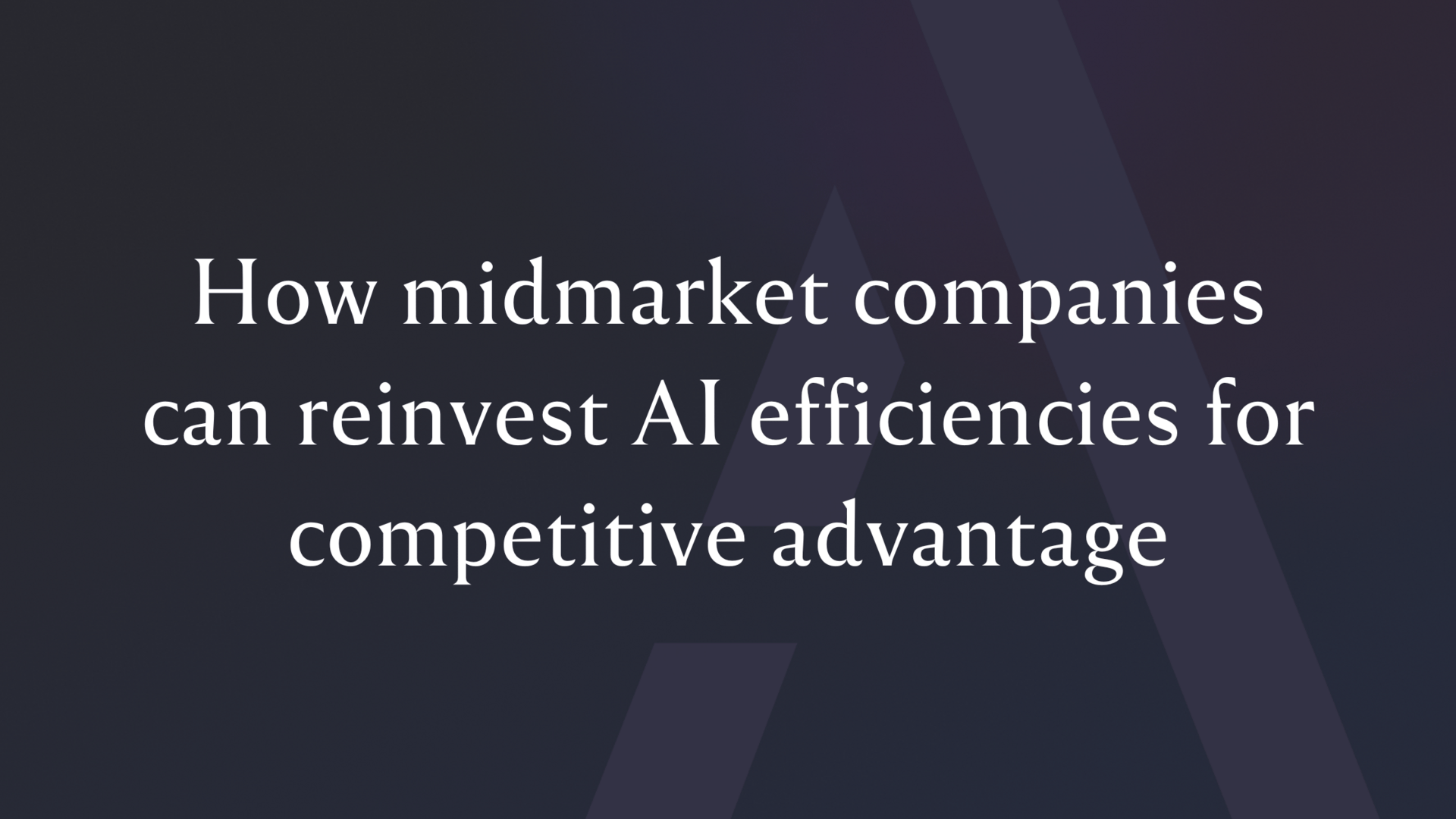- Able Craft & Code
- Posts
- Your product team isn't lagging—they're exposing your bottlenecks
Your product team isn't lagging—they're exposing your bottlenecks
Why your product team can't keep up with engineering (and shouldn't try)
In this issue:
CRAFT: Why AI can't accelerate everything equally—and what that means for how you lead
CODE: The real competitive advantage in the AI era and how product plays a crucial role
NEWS: How Big Tech's fight against regulation could create your competitive advantage, why AI adoption depends on meeting teams in their existing workflows, and the infrastructure partnership model that beats trying to match hyperscaler budgets
CRAFT NOTES
What we’re thinking about
Your engineering team is coding 55% faster with AI but your product team isn't moving proportionally faster. What’s going on? As our Principal Product Manager Simon Bengel recently wrote on our blog, there are two issues.
The more obvious reason: the nature of product work. Product teams face constraints that AI tools simply can't dissolve. A/B tests need real users and real time. Compliance requires human oversight. Strategic decisions demand context that AI doesn't have. Approvals from legal and security can't be automated away.
The less-obvious constraint that's easy to miss: developers work in a single environment where AI maintains context, while product managers work across a fragmented tool stack. A developer using Copilot in their IDE has continuous memory. A product manager moving between Jira, Figma, Confluence, Slack, and spreadsheets—each with potentially different AI tools—doesn't. Without unified context, AI can't build institutional knowledge.
This isn't just a people problem. It's a systems problem.
The latest DORA research validates the impact: "When developers use AI tools and write code faster, the code still needs to go through testing and review queues, followed by integration and deployment processes. The overall pace of delivery is unlikely to change significantly unless the surrounding workflows are updated."
Or as quality management pioneer W. Edwards Deming said: "A bad system will beat a good person every time."
AI is functioning as a mirror. In well-aligned organizations, it amplifies flow. In others, it exposes constraints that were always there—coordination friction, approval bottlenecks, fragmented toolchains, and work that fundamentally requires human judgment.
The velocity gap you're seeing isn't a failure. It's diagnostic information about where your system's true constraints live.
The organizations that will pull ahead aren't pressuring every function to "move faster." They're redesigning how different functions work together when acceleration happens asymmetrically. They're asking: Where does work actually stall? What requires human oversight by design? How do we create unified context across fragmented workflows? How do we build decision-making structures that handle different velocities across functions?
The path forward isn't about matching engineering's pace. It's about moving differently.
CODE LAB
What we’re discovering
"Generative tools have made it possible for anyone to build a product. But in this new era, differentiation comes not from functionality, but from focus — the ability to design experiences that are meaningful, elegant, and deeply aligned with customer needs. That's the real work of product."
Why this matters for your team: When AI makes building easy, every feature request becomes technically possible. Your backlog explodes. Your team fragments across scattered initiatives. The constraint isn't coding capacity anymore—it's strategic clarity about what actually matters. The companies winning with AI aren't the ones building everything they can. They're the ones who've doubled down on problem framing, user research, and ruthless prioritization. AI has automated the "can we build this?" question. Now the hard work is answering "should we?" Your competitive advantage isn't velocity. It's focus.
AI NEWS
What we’re paying attention to
Anthropic just embedded Claude directly into Excel with real-time financial data connectors and pre-built skills for modeling and analysis—directly challenging Microsoft Copilot. The move seeks to validate a critical principle: AI adoption works best when it meets teams in their existing workflows, not when it forces them onto new platforms.
Major US tech companies are pressuring the EU to pause AI Act enforcement, with companies like Meta pledging to "push back on governments around the world." Why? Governance at scale is expensive and slows deployment. But customers increasingly demand trustworthy AI, especially in regulated industries. Here's your advantage: it's easier to build governance into AI systems at mid-market scale than to retrofit them across billions of users. While giants fight the rules, you can already be compliant. That's not a resource constraint. That's differentiation.
The U.S. Department of Energy just partnered with a private company on a $1 billion deal to construct two supercomputers. The Department of Energy will host the computers, the private company provides hardware, both share computing power. There’s an interesting takeaway for mid-market companies here: strategic partnerships may beat trying to match hyperscaler budgets. The question isn't whether you can afford your own AI infrastructure—it's whether you're building the right partnerships to access what you need.
SKIP THE ENDLESS EXPLORATION, START BUILDING
Done with endless AI meetings? Ready for practical implementation?


